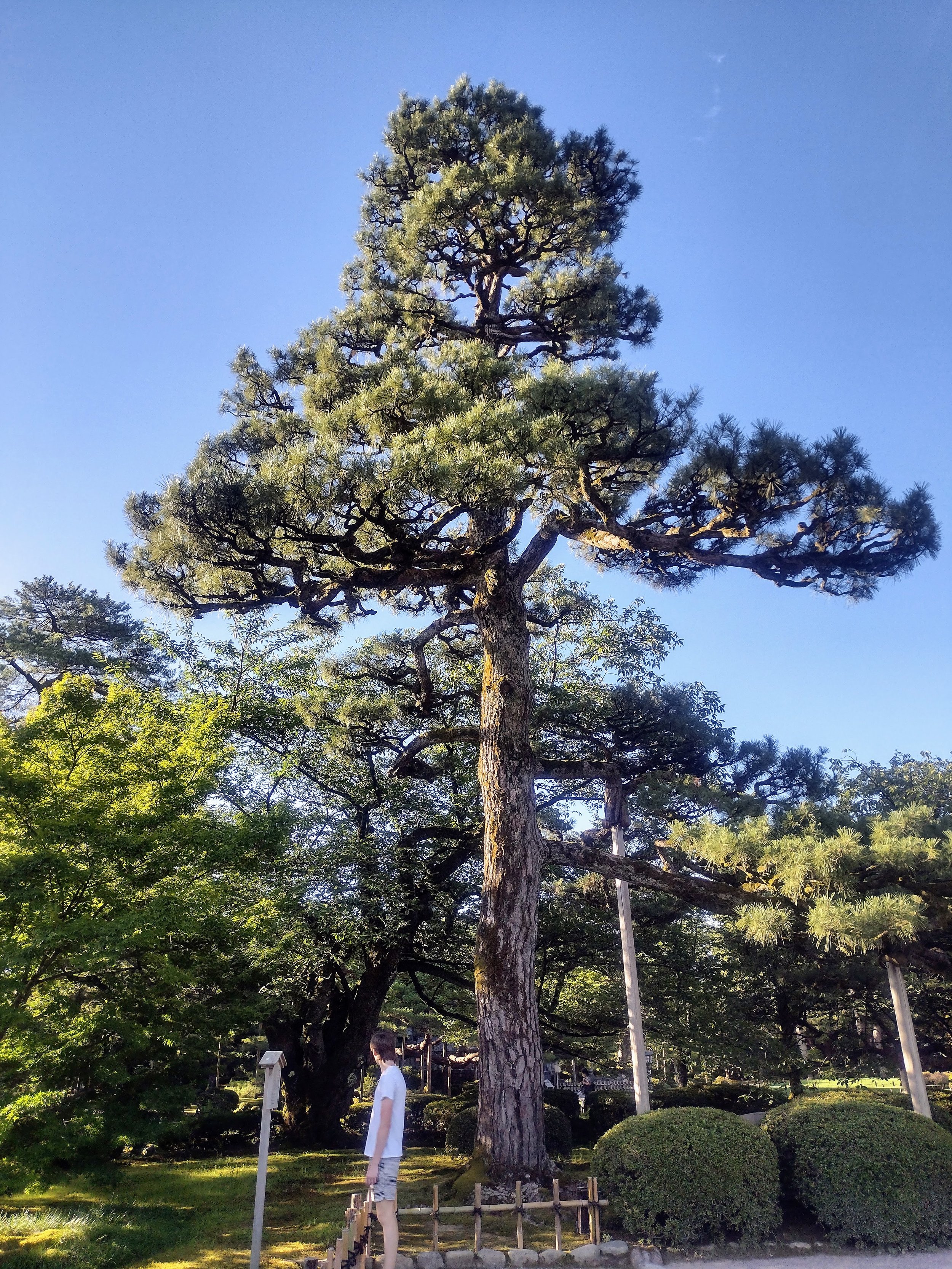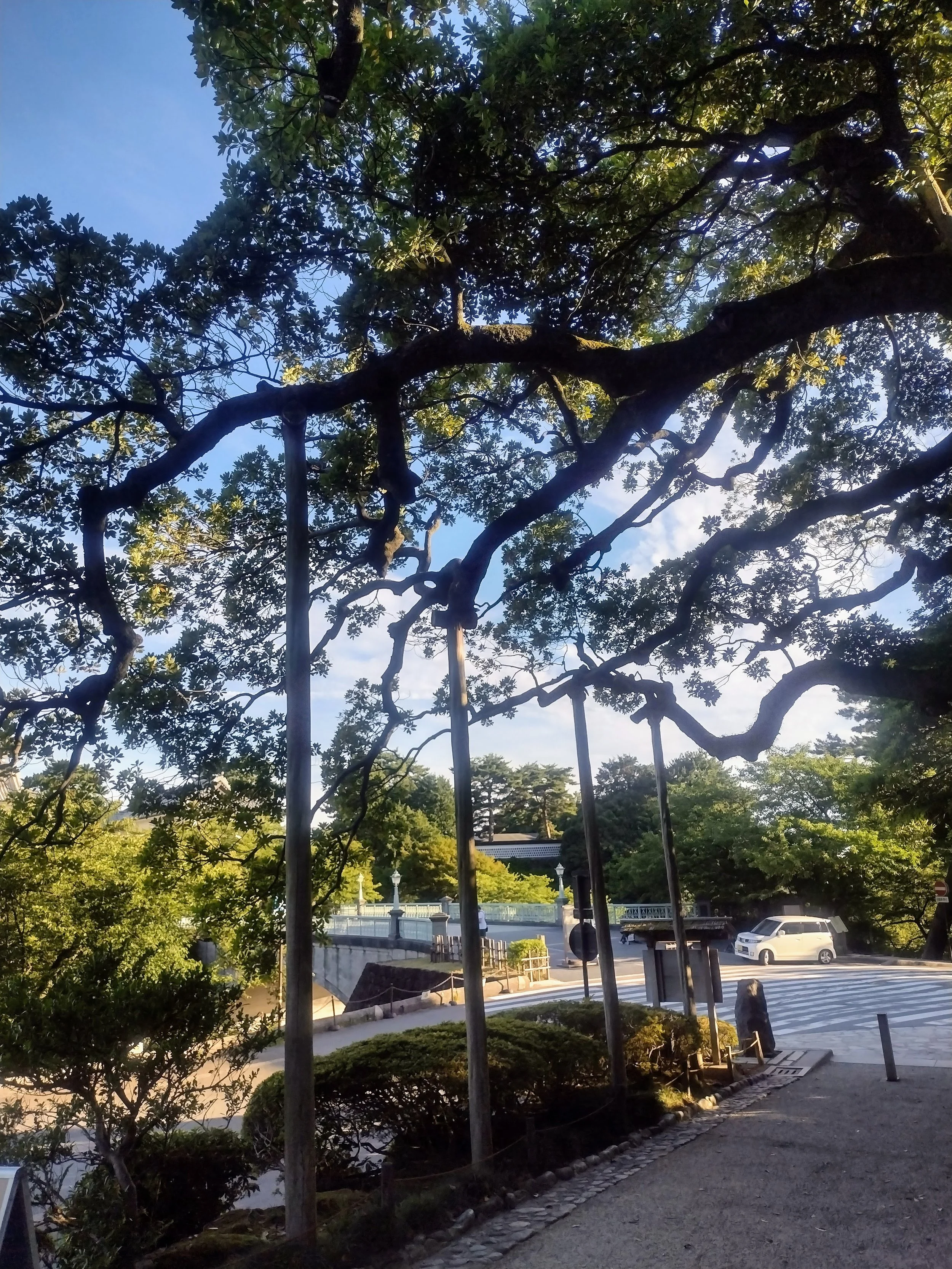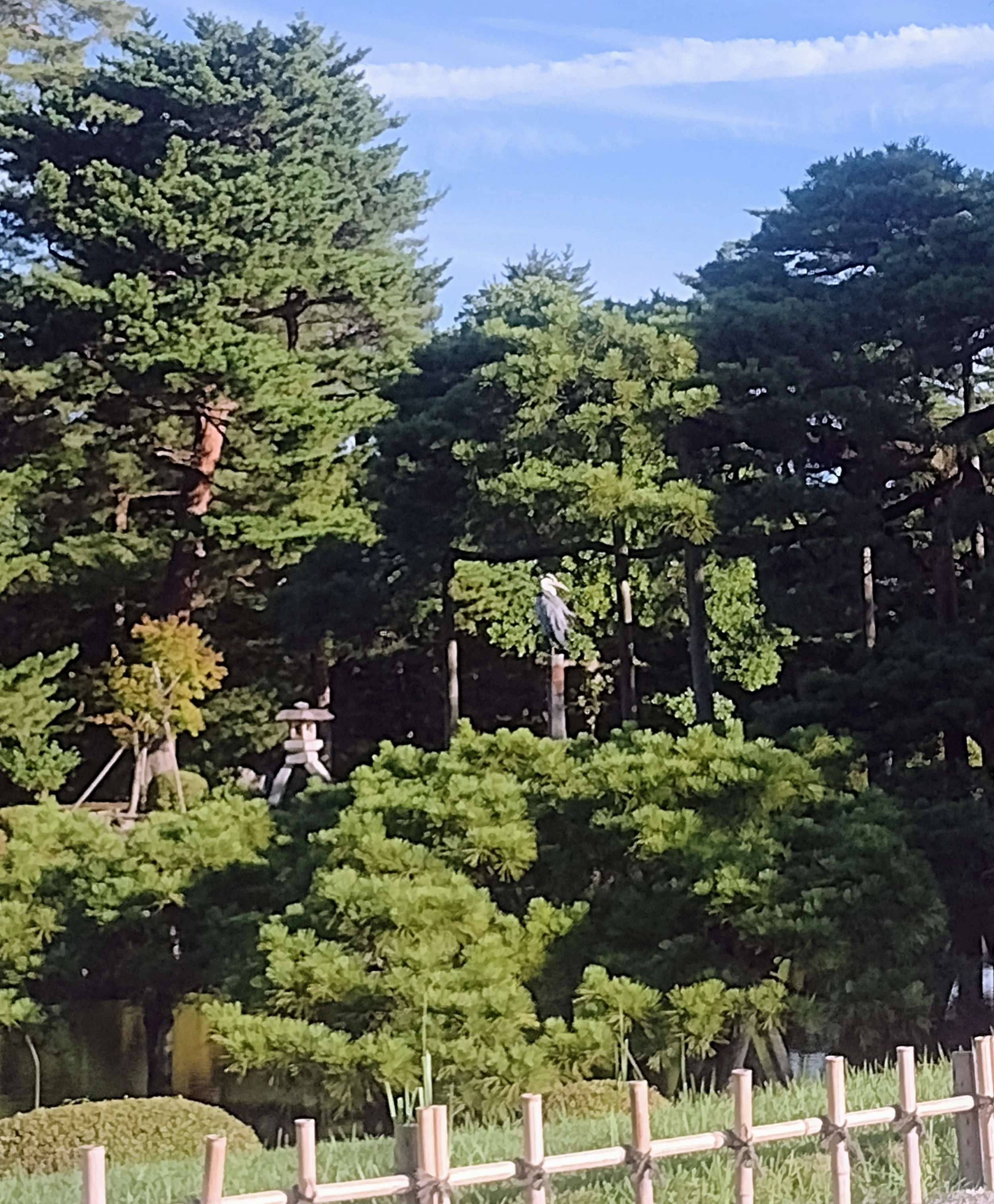Kenroku-en: A living historical landscape
Early morning inside Kenroku-en
Even on a family vacation, if there’s a remarkable garden nearby, I will find a way to include it. Even if there isn’t a remarkable garden nearby, I will still find a way to make it happen. In this case, though, Kenrokuen wasn’t a side quest or bonus stop, it was THE reason we traveled to Kanazawa. And it more than justified its place on our itinerary.
Looking back from Kenroku-en entrance to crosswalk and bridge that connects back to castle grounds
Often named one of Japan’s three great gardens, Kenrokuen offers a tranquil yet dynamic experience, unfolding slowly through winding paths, shifting elevations, and ancient trees that seem to exhale history. While once part of the castle grounds—where we saw locals jogging and strolling—the garden itself felt more contemplative. Inside the gates, garden etiquette was clear: no jogging, no picnicking. In Japan, eating and drinking in public is generally discouraged unless you’re in a designated area, despite the abundance of vending machines. Trash bins are rare, which means you carry your personal trash until you get home—or until your next 7-Eleven stop. We found ourselves trading out empty bottles for new cold drinks and hauling the leftovers around all day. It made us acutely aware of just how much waste we generate. Yet despite the lack of bins, Japan is remarkably litter-free. In our entire trip, I remember seeing litter only once and it certainly wasn’t in a train station, subway, or public restroom.
Kenrokuen is a garden designed not just to be seen, but to be experienced. Every turn, elevation change, and framing of a view feels intentional, crafted with the rhythm of strolling in mind. It’s a place where movement is slow and observant, where the landscape reveals itself in a series of carefully paced moments. Even the suggested walking route outlined on the map feels like an act of hospitality, a gentle guide to help visitors take in the garden the way it was meant to be seen. It’s one more example of the deep consideration given to how people interact with space as an extension of the same thoughtfulness found in everything from the pruning of 300-year-old pines to the placement of a single stone.
The Japanese Black Pines (Pinus thunbergii) are total showstoppers, some meticulously maintained for over 300 years. To put that into perspective, they were planted before the U.S. was even a country. Their sculptural presence and careful tending make the entire landscape feel revered.




However, it was one of the de-emphasized areas that ended up a favorite; this unexpected spot came from a high clearing that looked out over the city of Kanazawa. The view stretched but was framed by pines and the dense housing below flowed across the hillside like a river, tracing the natural topography of the land. It was the kind of view that made me question where our shaping of the land ends and nature’s influence begins.
Overlooking Kanazawa
Can birds and trees be friends?
On the main route, not far from the overlook, I caught sight of a grey heron perched in one of the oldest pines. A friendly local, kind enough to practice his English, shared that this heron is a regular. A local to this spot in the garden. Part of me hopes he has a name by now, a quiet honor bestowed by the caretakers of the garden. Maybe he just has refined taste in real estate. Or maybe he’s developed an unlikely friendship with the tree. Can birds and trees be friends? In a place like this, I wouldn’t doubt it.
Beyond the formal boundaries of Kenrokuen, but still within the old castle grounds, we wandered along a moat thick with waterlilies in full bloom. Every shade of pink, white, and yellow floated gently on the surface. And just above them? Dragonflies. Dozens of them, in a blur of color and motion—iridescent blues, fiery reds, and perhaps even a few nymphs. It was the most animated and joyful dance of dragonflies I’ve ever witnessed.
Our first visit, however, was cut short. July in the western part of Japan means oppressive heat and humidity, even in a garden as shady and peaceful as this one. So we decided to return for a second time early the next morning before catching our bullet train back to Tokyo. This morning, the heron was basking in the sun on the roof edge of the shelter house overlooking one of the ponds, across from his favorite tree to perch on.
On our second early morning visit, we found ourselves wondering about something more hidden: the water. Where does it come from, and how is it guided so precisely through the garden’s network of ponds, streams, and even a centuries-old fountain? We ran out of time before catching our bullet train, but the question lingered. The hydrology of Kenrokuen, shaped by human hands for the sake of experience, is a quiet marvel in itself. I was recently introduced to Any Austin via a podcast, the YouTuber is known for mapping out complex video game worlds, would he be willing to trace and explain the flow of water through this living, centuries-old landscape. It may not be a game, but it stirs curiosity.
And still, there is more to see. I find myself already dreaming of returning in winter, when the pines are dressed in yukitsuri, the elegant ropes that protect their limbs from heavy snow. That’s what I love about gardens, the way they evolve with the seasons, always changing, always expressing something new, no matter our human intervention. Or in this case, less intervention and more collaboration, our attempt to work with nature and quietly enhance it. There is something truly moving about walking through a garden that has been maturing and shifting for centuries, shaped by time, weather, and countless hands.















